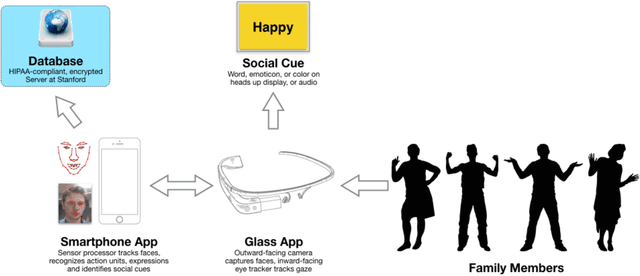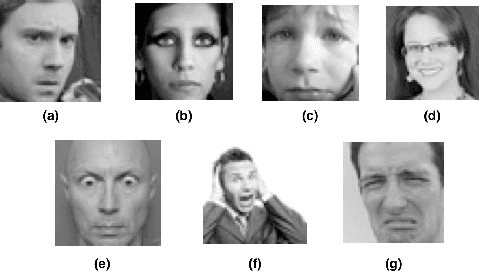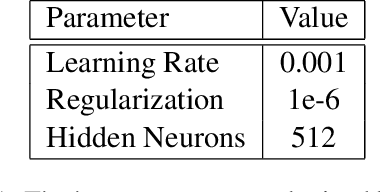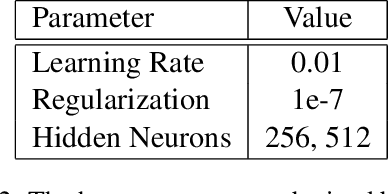Azar Fazel
A Wearable Social Interaction Aid for Children with Autism
Apr 19, 2020
Abstract:With most recent estimates giving an incidence rate of 1 in 68 children in the United States, the autism spectrum disorder (ASD) is a growing public health crisis. Many of these children struggle to make eye contact, recognize facial expressions, and engage in social interactions. Today the standard for treatment of the core autism-related deficits focuses on a form of behavior training known as Applied Behavioral Analysis. To address perceived deficits in expression recognition, ABA approaches routinely involve the use of prompts such as flash cards for repetitive emotion recognition training via memorization. These techniques must be administered by trained practitioners and often at clinical centers that are far outnumbered by and out of reach from the many children and families in need of attention. Waitlists for access are up to 18 months long, and this wait may lead to children regressing down a path of isolation that worsens their long-term prognosis. There is an urgent need to innovate new methods of care delivery that can appropriately empower caregivers of children at risk or with a diagnosis of autism, and that capitalize on mobile tools and wearable devices for use outside of clinical settings.
Convolutional Neural Networks for Facial Expression Recognition
Apr 22, 2017



Abstract:We have developed convolutional neural networks (CNN) for a facial expression recognition task. The goal is to classify each facial image into one of the seven facial emotion categories considered in this study. We trained CNN models with different depth using gray-scale images. We developed our models in Torch and exploited Graphics Processing Unit (GPU) computation in order to expedite the training process. In addition to the networks performing based on raw pixel data, we employed a hybrid feature strategy by which we trained a novel CNN model with the combination of raw pixel data and Histogram of Oriented Gradients (HOG) features. To reduce the overfitting of the models, we utilized different techniques including dropout and batch normalization in addition to L2 regularization. We applied cross validation to determine the optimal hyper-parameters and evaluated the performance of the developed models by looking at their training histories. We also present the visualization of different layers of a network to show what features of a face can be learned by CNN models.
 Add to Chrome
Add to Chrome Add to Firefox
Add to Firefox Add to Edge
Add to Edge